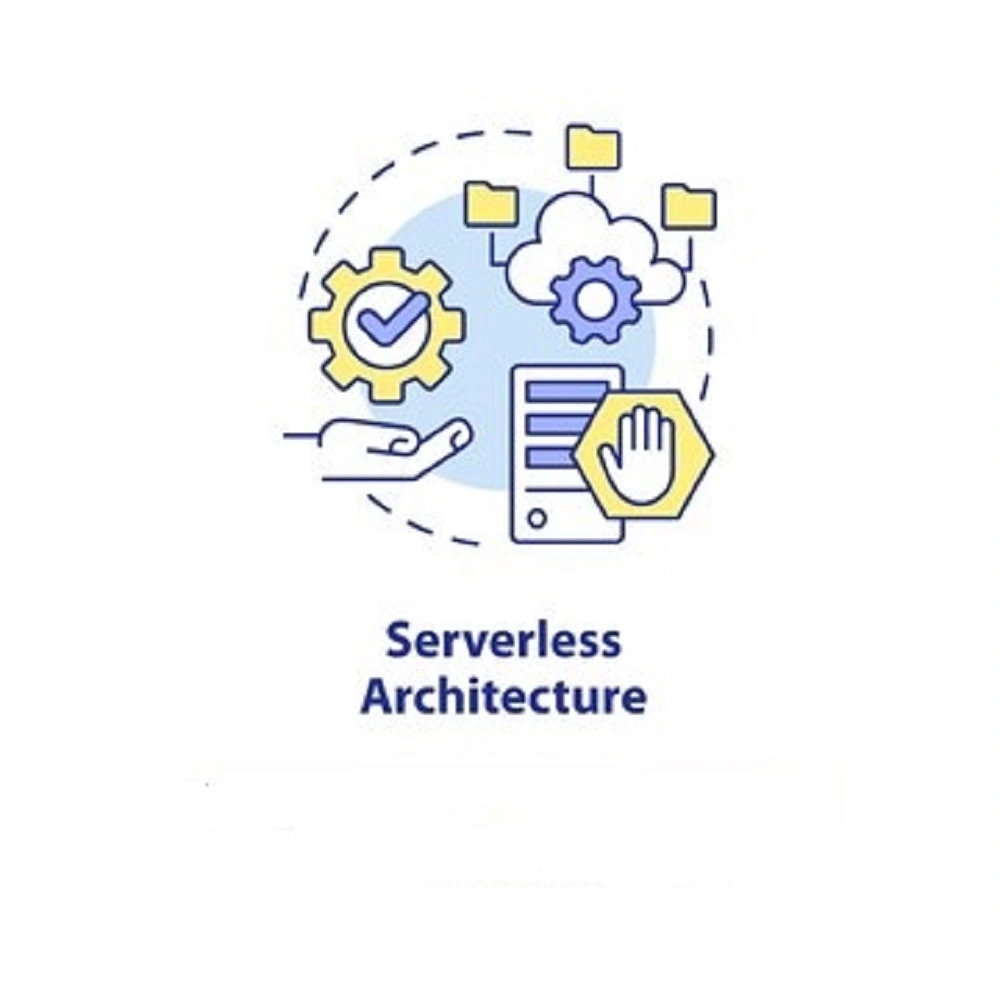Reasons why updating the new web development technology trends is significantly important

Competitive advantage
In the fast-paced field of web development, adopting the latest trends can give your projects a competitive edge. Implementing cutting-edge technologies and techniques can make your websites or applications stand out from the competition, attract more users, and potentially lead to increased business opportunities.
Improved user experience
New trends often focus on improving user experience. By staying updated, you can leverage advancements in technologies like Progressive Web Apps (PWAs), WebAssembly, and responsive design to create faster, more engaging, and user-friendly websites and applications. This can lead to higher user satisfaction and retention.
Efficiency and productivity
Embracing new tools and frameworks can boost your development team’s efficiency and productivity. Modern development tools and methodologies often streamline workflows, reduce development time, and make it easier to maintain and scale web projects. This can result in cost savings and faster time-to-market for your products.
Security and compliance
Staying informed about the latest security best practices and trends is crucial to protect your web applications and user data. Cybersecurity threats constantly evolve, and keeping up with security trends helps you implement the latest security measures, adhere to compliance regulations, and safeguard your users’ information.
Future-Proofing
By keeping up with web development trends, you can future-proof your skills and projects. Technologies that are popular today might not be as relevant in a few years. Learning and adopting new trends allows you to adapt to changing user preferences, technological advancements, and industry standards, ensuring the long-term viability of your web development efforts.
Top 8 latest trends in web development 2025 and practical tips for implementing them
Now that we have explored why it is important to keep up with the latest web development trends, let’s take a closer look at the top 8 web development trends 2023. Before we delve into the trends, let’s paint a picture of the current trending technologies in web development. Here’s a snapshot:
- The web development industry is booming, with a constant demand for skilled professionals.
- More than half of global web traffic comes from mobile devices.
- User experience (UX) is paramount, influencing both design and functionality.
- Cybersecurity and data privacy concerns are at an all-time high.
- The move towards a more inclusive web with accessible design is gaining momentum.
Let’s now explore the most prominent trends expected to shape web development in 2025.
1. Low Code
Low-code development, at its core, simplifies software creation through visual interfaces and minimal coding. It democratizes app development by enabling users of varying technical backgrounds to build applications using pre-built components and logic, reducing the reliance on traditional coding.

Benefits of Low Code in Web Development
- Speed: Low-code platforms are synonymous with accelerated application development. They empower organizations to swiftly bring solutions to market, significantly reducing development timelines.
- Accessibility: A standout feature of low-code is its accessibility. It invites non-developers to actively participate in the application development process. This inclusivity fosters collaboration, enabling teams to work together seamlessly and expeditiously, ultimately expediting the delivery of vital business applications.
- Cost-Efficiency: By streamlining development processes and requiring fewer resources, it can lead to significant cost savings. Organizations can allocate their budgets more effectively, ensuring a higher return on investment for their application development projects.
- Scalability: Many of these platforms are designed with scalability in mind, making them suitable for a wide spectrum of projects. Whether you’re building small prototypes or complex enterprise-level applications, low-code can seamlessly adapt to your scalability needs.
- Consistency: Low-code platforms often enforce best practices and development standards. This commitment to consistency leads to more reliable and predictable outcomes. Applications built using low-code are less prone to errors and deviations from established conventions, resulting in higher-quality software products that meet user expectations.
Use Cases:
- Rapid Prototyping: Low-code shines in the realm of rapid prototyping. It provides an ideal platform for swiftly translating concepts and ideas into tangible prototypes. This quick and iterative approach allows businesses to validate their innovations, make informed decisions, and refine their ideas before committing to full-scale development.
- Internal Tools: Low-code offers a practical solution for building internal tools, such as customized dashboards and process automation applications. It empowers organizations to meet specific operational needs without extensive development resources, enhancing efficiency and optimizing workflows within the company.
- Customer-Facing Apps: When it comes to creating customer-facing applications, low-code is a versatile choice. It enables the development of web and mobile applications for various purposes, including e-commerce, content management, and more. Its speed and flexibility make it a valuable tool for enhancing customer engagement and user experiences.
- Workflow Automation: Streamlining business processes and automating repetitive tasks is a forte of low-code development. It facilitates the design and implementation of automated workflows, reducing manual intervention and increasing efficiency. This capability is particularly valuable for businesses looking to optimize their operations and reduce operational overhead.
- Legacy System Integration: Low-code doesn’t just focus on new developments; it’s also adept at integrating with existing systems and databases. This is instrumental in modernizing legacy applications, bridging the gap between old and new technologies, and ensuring that legacy systems remain compatible with evolving business requirements.
Tips for Implementation
- Define Objectives: Before diving into low-code development, it’s essential to clearly define your project’s objectives, requirements, and scope. Having a well-defined plan in place will help you make informed decisions when selecting a low-code platform and guide your development process effectively.
- Evaluate Platforms: Not all low-code platforms are created equal. Take the time to assess various low-code options available. Consider factors such as how well they align with your project’s specific needs, scalability requirements, and security standards. A thorough evaluation will ensure you choose the platform that best suits your project.
- Training: Invest in proper training for your team. Ensure that they have the skills and knowledge required to utilize the selected low-code platform effectively. Training empowers your team to harness the platform’s capabilities fully, leading to better outcomes and efficient development processes.
- Security and Compliance: Security is paramount in any software development project. When working with low-code, pay close attention to the platform’s security features and compliance capabilities. Protect sensitive data and ensure that your applications meet industry-specific or regulatory compliance standards.
- Scalability Planning: Think long-term when it comes to scalability. Consider how your chosen low-code platform accommodates future growth and evolving project needs. Scalability planning is crucial to ensure that your applications can handle increased usage, additional features, and changing demands as your business expands.
Examples
Several noteworthy low-code platforms stand out in the world of application development. OutSystems is recognized for its versatility and visual development tools, enabling a wide range of applications. Mendix, with its user-friendly interface and powerful capabilities, excels in building enterprise-level solutions. Appian specializes in workflow automation and business process management. Microsoft Power Apps, part of the Microsoft Power Platform, seamlessly integrates custom apps with Microsoft services. Zoho Creator caters to small and medium-sized businesses, allowing them to create web and mobile apps with ease. Quick Base offers versatile low-code development and workflow automation for various industries and use cases. These platforms empower organizations to streamline development, boost efficiency, and bring innovative solutions to life with minimal coding.
2. AI and Machine learning integration
AI (Artificial Intelligence) and machine learning integration involve embedding AI and machine learning algorithms into software applications and systems to enhance their capabilities, enabling them to learn from data, make intelligent decisions, and perform tasks that traditionally require human intervention.

Benefits of AI and ML Integration in Web Development
The infusion of AI and ML into web development ushers in a multitude of benefits.
- Enhanced User Experience: Through AI-driven interfaces, web applications become adept at comprehending user behavior and preferences, resulting in the delivery of personalized content and smoother interactions.
- Improved Content Management: AI empowers systems to offer content recommendations and auto-tagging, streamlining content creation, organization, and discovery processes.
- Performance Optimization: the performance of websites sees a boost, with ML algorithms optimizing website performance, ensuring faster loading times, and facilitating seamless user experiences.
- Automation of Repetitive Tasks: AI’s capability to automate repetitive tasks brings increased efficiency by taking on duties like data entry and content moderation, thereby reducing manual workloads and mitigating human errors.
Use Cases for AI in Web Development
- Chatbots and Virtual Assistants: They provide real-time customer support, promptly answering user queries, resolving issues, and guiding visitors through websites. Virtual assistants, particularly voice-activated chatbots, have taken user interactions to new heights by offering hands-free navigation and interaction. Whether it’s finding information, making reservations, or troubleshooting problems, these AI-driven assistants enhance user experiences by providing instant assistance.
- Personalization: AI’s prowess in analyzing user data fuels a remarkable level of personalization. Websites utilize AI to curate personalized content, from tailored news feeds to product recommendations. Dynamic user interfaces adapt to individual preferences, ensuring that each visit feels uniquely tailored. Personalized landing pages and email marketing campaigns, driven by AI’s data-driven insights, lead to higher conversion rates and customer satisfaction. AI doesn’t just serve content; it crafts experiences that resonate with each user.
- Content Generation: Content is the lifeblood of the web, and AI-powered content generation tools have transformed how it’s produced. These tools assist in creating articles, blog posts, and product descriptions, saving time and resources. Natural Language Generation (NLG) AI, a subset of AI, takes content generation a step further by producing personalized messages and responses for users. Whether it’s generating product descriptions or automating content updates, AI enhances content creation in web development.
- Predictive Analytics: AI’s predictive capabilities are invaluable for web developers. AI predicts user behavior based on historical data, helping optimize content, layouts, and marketing strategies. For e-commerce websites, predictive analytics guides inventory management, pricing strategies, and demand forecasting. With AI’s insights, web developers can stay one step ahead, ensuring that websites adapt to user needs and market trends in real-time.
Tips for Implementation
- Identifying Opportunities: Begin by identifying areas within your web application where AI can significantly enhance user experiences. For instance, consider implementing chatbots for real-time customer support, ensuring users have instant access to assistance.
- Leveraging Pre-Trained Models: Speed up development by integrating pre-trained AI models through APIs or libraries. These models come with a wealth of knowledge, accelerating your project’s progress.
- Continuous Improvement: The key to AI success is continuous refinement. Regularly gather and analyze data to fine-tune AI algorithms and recommendations, ensuring they stay relevant and effective.
- Data Privacy and Ethical Use: Always prioritize data privacy and ethical AI use. Comply with relevant regulations and best practices, safeguarding user data and ensuring responsible AI implementation throughout your web development journey.
Examples of AI Integration
Examples abound of AI integration across diverse industries. From AI-powered robots in manufacturing and Siri, Apple’s voice-activated assistant, to recommendation engines on platforms like Netflix and self-driving cars developed by companies like Waymo, AI is undeniably transformative. In education, platforms like Duolingo use AI to create personalized language lessons, making learning engaging and efficient. These examples underscore the versatility and potential of AI integration in revolutionizing the web development landscape, enhancing user experiences, and pushing the boundaries of what digital applications can achieve.
3. Mobile-first design and development
Mobile-First Design and Development is a web design and development approach that prioritizes the creation and optimization of websites and web applications for mobile devices before scaling up to larger screens, such as tablets and desktops. This approach recognizes the growing dominance of mobile devices in internet usage and aims to provide the best possible user experience for mobile users.
The Importance of Mobile-First Design (benefits)
Enhanced User Experience: Mobile-First design ensures a seamless and engaging experience on smartphones, where users spend a significant portion of their online time.
- Wider Reach: Prioritizing mobile means reaching a broader audience, and accommodating users who access websites primarily through mobile devices.
- Improved SEO Ranking: Search engines reward mobile-friendly websites with higher rankings, making mobile-first design crucial for visibility.
- Faster Loading Times: Optimizing for mobile typically results in faster loading times, enhancing user satisfaction and SEO performance.
- Future-Proofing: Adhering to mobile-first principles future-proofs your website, aligning it with the ongoing mobile-centric trend.
Responsive Design Principles
With an awareness of the importance of Mobile-First Design, we should now explore its fundamental principles. These principles form the bedrock of creating websites that seamlessly adapt to varying screen sizes, ensuring users have an optimal experience across all devices. Here are the principles:
- Fluid Grids: Use flexible grid layouts that adapt to different screen sizes, ensuring content fits comfortably.
- Flexible Images: Employ images that scale and maintain quality on various devices.
- Media Queries: Apply CSS media queries to adjust styles and layout based on screen dimensions.
- Mobile-First CSS: Begin styling with mobile devices in mind, then progressively enhance for larger screens.
- Content Priority: Prioritize essential content for mobile screens, ensuring it remains prominent and accessible.
Tips for implementation
To ensure a seamless transition and maximize your website’s effectiveness on mobile devices, you need the following essential tips:
- Prioritize Mobile-First: Kickstart projects with a mobile-first mindset. Begin by addressing mobile design and functionality, setting the stage for a solid foundation before expanding to larger screens.
- Responsive Design: Apply responsive design principles diligently to guarantee a consistent and user-friendly experience across an array of devices. This approach ensures that your website adapts seamlessly to various screen sizes, maintaining usability and aesthetic appeal.
- Usability Testing: Dive into usability testing on a range of mobile devices. This hands-on evaluation will help identify potential issues and ensure that your website functions optimally on smartphones, tablets, and other mobile gadgets.
- User Behavior Analysis: To stay on the cutting edge of Mobile-First Design, continuously monitor and analyze mobile user behavior. This ongoing assessment allows you to glean insights into user preferences and refine your website accordingly, keeping it aligned with evolving mobile trends.
Examples of Mobile-First Design and Development trends
Several prominent companies have embraced Mobile-First Design to deliver outstanding user experiences on smartphones. YouTube, a global video-sharing giant, offers a mobile app with an intuitive interface and responsive video playback, catering to on-the-go viewers. Apple, known for its commitment to user experience, meticulously designs its website and applications for iPhones and iPads. Facebook’s mobile app prioritizes mobile users, simplifying social networking on smartphones. Airbnb’s mobile app streamlines travel bookings, while Evernote’s mobile-first approach empowers users to organize ideas efficiently. These examples demonstrate the pivotal role of Mobile-First Design in providing accessible, responsive, and feature-rich experiences for a mobile-centric audience.
- Suggested for you: Mastering UX Design Process & Tips To Work With Design Team
4. Voice search optimization
Voice Search Optimization is a web development approach aimed at improving a website’s or online content’s visibility and relevance in voice-activated search queries. As voice-activated devices and virtual assistants like Siri, Google Assistant, and Amazon Alexa become increasingly popular, users are changing how they search for information online.

The Importance of Optimizing for Voice Search (benefits)
Voice Search Optimization is a pivotal aspect of modern web development trending, responding to the changing landscape of online search behaviors. Here are the greatest benefits of optimizing for Voice Search:
- Changing Search Behavior: User behavior is shifting towards voice commands for searches. This change emphasizes the need for websites to be voice search-ready, accommodating users who seek information through spoken queries.
- Local Search Dominance: Voice searches often carry local intent, making voice search optimization indispensable for businesses targeting local customers. Being voice-optimized ensures that businesses appear in voice search results for relevant local queries.
- Mobile and On-the-Go: Voice searches are predominantly performed on mobile devices. Optimizing for voice search caters to users who are often on the move, seeking quick answers and assistance through voice commands.
- SEO Competitiveness: As search trends evolve, optimizing for voice search becomes integral to maintaining SEO competitiveness. It aligns websites with the latest search behaviors and ensures they stay visible and relevant.
Tips for Implementation
To effectively implement Voice Search Optimization, consider these key strategies:
- Natural Language Optimization: Craft content that aligns with natural language and conversational queries. Voice search relies on understanding how people naturally speak, so optimizing content to match these patterns is crucial.
- Schema Markup: Implement schema markup to enhance content visibility in voice search results. Structured data helps search engines understand your content, increasing the likelihood of being featured in voice search snippets.
- Voice-Friendly Interfaces: Create user interfaces and navigation that are voice-friendly. Consider how users interact with voice-activated devices and design interfaces that cater to this interaction style. This ensures a seamless and intuitive experience for voice search users.
- Regular Updates: Voice search trends and user preferences evolve over time. It’s essential to continuously update and refine your content to align with these changes. Regular updates keep your website competitive and ensure it remains visible in voice search results.
Examples of Voice Search Optimization
Several leading voice-activated platforms and virtual assistants dominate the voice search landscape. They are Google voice search, siri, Amazon’s Alexa, Netflix voice search. Google Voice Search delivers rapid, precise results via voice queries. Apple’s Siri is a versatile virtual assistant, handling various tasks through voice commands. Amazon’s Alexa, integrated into numerous devices, extends voice search’s accessibility and convenience. Even in entertainment, Netflix employs voice search to simplify content discovery. These instances underscore the pervasive presence of voice search technology, spotlighting its crucial role in modern web development.
5. Cybersecurity and data privacy
Just as Voice Search Optimization redefines how we access information, Cybersecurity and Data Privacy revolutionize how we safeguard our digital world. Cybersecurity and Data Privacy is the practice of protecting digital systems, networks, and data from unauthorized access, damage, or theft. It encompasses a broad range of technologies, processes, practices, and measures designed to secure digital assets and ensure the confidentiality, integrity, and availability of information.
Advantages of Cybersecurity and Data Privacy

- Protection Against Data Breaches: Shielding sensitive information from breaches ensures that valuable data remains out of malicious hands.
- User Trust and Confidence: A solid commitment to data security fosters user trust and confidence, essential in a world increasingly reliant on digital transactions and interactions.
- Compliance with Regulations: Staying in harmony with regulations like GDPR and CCPA not only prevents legal complications but also demonstrates a commitment to safeguarding user data.
- Business Continuity: Effective cybersecurity measures ensure uninterrupted business operations, even in the face of potential threats.
- Competitive Advantage: Embracing Cybersecurity and Data Privacy offers a competitive edge, attracting users who prioritize data security.
Trends in Web Development for Securing User Data
In the relentless pursuit of safeguarding user data, contemporary web development trends are pivotal. These trends converge on a single mission: fortifying the security of digital ecosystems. By universally adopting HTTPS protocols, the digital realm ensures secure data transmission, amplifying user trust. Robust data encryption techniques stand as an impregnable fortress against unauthorized access. Multi-Factor Authentication (MFA) elevates account security to unprecedented levels, exemplified by Google’s 2-Step Verification. Regular security audits and vulnerability assessments, mirroring IBM’s diligent practices, bolster defenses against emerging threats. Finally, the adoption of privacy-centric design principles, akin to WhatsApp’s end-to-end encryption, underscores web development’s commitment to safeguarding user data. These trends signify a harmonious marriage between technology and security, fortifying the digital landscape against ever-evolving threats.
Implementing Cybersecurity and Data Privacy: A Tactical Approach
When embarking on the journey to fortify Cybersecurity and Data Privacy, consider these strategic tips for seamless implementation:
- Conduct Thorough Security Audits: Regular security audits and vulnerability assessments of your website are fundamental. These proactive measures reveal potential weaknesses, allowing for timely fortification.
- Implement SSL Encryption: Secure Socket Layer (SSL) encryption is paramount. It guarantees secure data transmission and storage, safeguarding user information from prying eyes.
- Educate Your Team: Equip your team with knowledge about best practices for data protection and privacy. A well-informed team is your frontline defense against threats.
- Stay Compliant: Adherence to relevant regulations, such as GDPR and CCPA, is non-negotiable. Complying with these standards not only shields you from legal repercussions but also underscores your commitment to data security, enhancing user trust.
Examples of Cybersecurity and Data Privacy
In the realm of Cybersecurity and Data Privacy, real-world exemplars shine as beacons. Google’s 2-Step Verification fortifies user accounts, showcasing unwavering data protection. SMS-Based Codes bolster user access security across numerous services. WhatsApp’s End-to-End Encryption guards private conversations, allowing only intended recipients to decipher messages. macOS Security Patching underscores Apple’s swift response to vulnerabilities, prioritizing user data protection. IBM Security Auditing equips businesses with robust penetration testing, ensuring formidable digital fortresses.
These practical examples serve as beacons in the realm of Cybersecurity and Data Privacy, demonstrating how organizations can effectively secure digital domains and instill user confidence.
6. Web accessibility
Web Accessibility in a Nutshell
In a digital age where information knows no bounds, ensuring that everyone can access and interact with online content is not just a choice—it’s a responsibility. This is where Web Accessibility steps in, a practice that lies at the intersection of design, technology, and empathy.
At its core, Web Accessibility is about creating digital landscapes that are open and inviting to all, regardless of their abilities. It involves breaking down barriers that could hinder individuals with disabilities from effectively navigating, understanding, and engaging with online content.
The benefits of Web Accessibility are far-reaching:
- Inclusivity for All Users: It opens digital doors to everyone, promoting equal opportunities for information and interaction.
- Legal Requirements: Complying with accessibility standards isn’t just a choice; it’s often a legal obligation in many regions.
- Expanding Your Audience: Making your digital spaces accessible means potentially reaching a broader audience, including those with disabilities.
- Ethical Imperative: Beyond the legalities, it’s a matter of ethics. Creating an inclusive online environment is simply the right thing to do.
Designing for All
To craft digital spaces accessible to everyone, consider these design principles:
- Provide Alternative Text: Ensure that images are accompanied by descriptive alternative text for screen readers.
- Ensure Keyboard Accessibility: Make sure all interactive elements can be easily accessed and used with a keyboard alone.
- Use Semantic HTML: Structuring content with proper HTML tags aids in screen reader interpretation and navigation.
- Provide Captions and Transcripts: For multimedia content, include captions and transcripts for audio and video elements.
- Test with Screen Readers: Regularly test your website with screen readers to identify and address accessibility issues.
- Color Contrast: Maintain sufficient color contrast to aid users with visual impairments.
- Consistent Navigation: Keep navigation elements consistent throughout your website for easier orientation.
Bringing Web Accessibility to Life
Web Accessibility isn’t just a concept—it’s a practice that impacts real lives. Apple’s VoiceOver, an integrated screen reader, and the Web Content Accessibility Guidelines (WCAG) with the Accessible Rich Internet Applications (ARIA) specifications are prime examples of technologies and standards that are paving the way for a more accessible digital world.
7. Serverless architecture
In the ever-evolving landscape of technology, paradigms shift, and innovations spark revolutions. Serverless architecture, also known as Function as a Service (FaaS), stands as a testament to the relentless progress of cloud computing, promising a world where developers can focus solely on their code, unburdened by the complexities of server management.

Understanding Serverless: Beyond the Hype
At its heart, serverless architecture is a transformative cloud computing model that redefines the way applications are developed and deployed. In this paradigm, developers channel their energy into crafting individual functions. These functions, marvels of modern engineering, lie in wait, ready to spring into action at the mere whisper of an event. They run in stateless containers, meticulously managed by a benevolent cloud provider. This approach, aptly named “serverless,” obliterates the shackles of server infrastructure management.
Embracing the Serverless Revolution: A World of Benefits
Serverless architecture ushers in a new era of computing, laden with advantages:
- Simplified Development: Developers are liberated from the tedium of server management, allowing them to focus solely on crafting code.
- Cost Efficiency: Pay only for the compute time consumed, making it an economical choice for many applications.
- Scalability: Scale effortlessly to meet surging demands without the need for manual intervention.
- Reduced Administrative Overhead: Bid farewell to server provisioning, maintenance, and monitoring.
- Faster Time-to-Market: Accelerate development cycles, ushering innovations to market at unprecedented speeds.
- Automatic High Availability: Built-in high availability ensures your functions are always at the ready.
- Ephemeral and Stateless: Stateless containers mean no lingering baggage, promoting nimbleness.
- Event-Driven: Functions respond to events, allowing for real-time, event-driven applications.
- Easy Integration: Seamlessly integrate with a variety of services and APIs, promoting interoperability.
- Resource Efficiency: Optimize resource usage for peak performance and minimal costs.
Embarking on the Serverless Journey: Tips for Success
Before embracing serverless architecture, consider these steps:
- Suitability Assessment: Evaluate your project’s suitability based on scalability and cost considerations.
- Cloud Provider Choice: Choose a cloud provider equipped with robust serverless offerings like AWS Lambda, Azure Functions, or Google Cloud Functions.
- Decomposition: Decompose your application into functions that can run independently, harnessing the full potential of serverless.
- Monitoring and Optimization: Continuously monitor and optimize resource usage to ensure cost-effective operations.
Real-World Inspiration: Leaders in Serverless Architecture
In the realm of serverless architecture, giants lead the way:
- Google Cloud Functions: Google’s serverless offering is a testament to its commitment to cutting-edge cloud technologies.
- AWS Lambda: Amazon Web Services’ Lambda is a pioneer in serverless computing, empowering businesses worldwide.
- Microsoft Azure Functions: Microsoft’s Azure Functions redefine application development, making it accessible to all.
- IBM OpenWhisk: IBM’s OpenWhisk is an exemplar of open-source serverless architecture, fostering innovation.
Serverless architecture isn’t just a buzzword; it’s a paradigm shift that’s reshaping the digital landscape. It’s about empowering developers, enhancing efficiency, and propelling innovation to new heights. In a world where the only constant is change, serverless architecture is a beacon lighting the path to a future where computing knows no bounds.
8. Single page applications (SPAs) and headless CMS
In the ever-evolving realm of web development, two transformative paradigms—Single Page Applications (SPAs) and Headless Content Management Systems (CMS)—stand as pillars of innovation. These concepts redefine how we build and deliver digital experiences, promising a new era of agility and flexibility.
Demystifying SPAs and Headless CMS
Let’s begin with a glimpse into these game-changers:
Single Page Applications (SPAs): SPAs are dynamic web applications that load a single HTML page and dynamically update content as the user interacts with the app. They offer a seamless, app-like experience within the confines of a web browser.

Headless Content Management Systems (CMS): Headless CMS decouples content creation and management from its presentation layer. It provides the content via APIs, allowing developers to display it on various platforms, be it a website, mobile app, or any digital channel.
The Power of SPAs and Headless CMS: Unleashing Benefits
Embracing SPAs and Headless CMS ushers in a wave of advantages:
For SPAs:
- Improved Performance: SPAs load only the necessary content, ensuring lightning-fast user experiences.
- Responsive and App-Like: They offer responsive design and an app-like feel, enhancing user engagement.
- Reduced Server Load: Server interactions are minimized, reducing the burden on server resources.
- Caching and Offline Access: SPAs can cache data for offline use, ensuring users stay engaged even when connectivity falters.
- Scalability: They can easily scale to accommodate increased user loads.
For Headless CMS:
- Content Flexibility: Content can be repurposed for various platforms, ensuring consistent messaging.
- Technology Agnostic: Developers have the freedom to choose the technology stack that best suits their project.
- Faster Development: Decoupling content from presentation streamlines development and speeds up time-to-market.
- Content Versioning and Workflow: Headless CMS often include versioning and workflow features, aiding content management.
Real-World Inspirations: SPAs and Headless CMS in Action
Witness the prowess of SPAs and Headless CMS through these real-world examples:
SPAs:
- Gmail: Gmail’s seamless interface relies on SPA architecture, delivering a responsive email experience.
- Twitter: Twitter’s rapid content updates and interactive features showcase the agility of SPAs.
Headless CMS:
- The Washington Post: The renowned publication uses a Headless CMS to manage and distribute content across various digital channels.
- NPR (National Public Radio): NPR’s diverse content thrives through a Headless CMS, reaching audiences across platforms.
Guiding Your Journey: Implementation Tips
Before embarking on this transformative journey, consider these steps:
- SPA Framework Selection: Choose a suitable SPA framework like React, Angular, or Vue.js based on project requirements.
- CMS Alignment: Select a Headless CMS that aligns with your content management needs and desired flexibility.
- Decoupling Content: Ensure content is decoupled from presentation, enabling content reuse and flexibility.
- Performance Assurance: Conduct thorough performance testing to ensure speedy rendering and efficient content delivery.
SPAs and Headless CMS aren’t just buzzwords; they’re cornerstones of modern web development. They’re about delivering lightning-fast, adaptable, and engaging digital experiences. In a world where agility is paramount, these paradigms propel us towards a future where web development knows no bounds.
Web development future trends to watch for 2025
As we explore the web development landscape for 2023, it’s essential to look beyond the immediate horizon. Anticipating future trends is critical for staying ahead in this rapidly evolving field. In this section, we’ll examine some of the exciting trends that are expected to gain prominence in the years following 2025.
1. Augmented reality (AR) and virtual reality (VR) integration
Why It Matters: Beyond 2023, we anticipate a significant surge in the integration of augmented reality (AR) and virtual reality (VR) technologies into web development. AR and VR have the potential to transform user experiences across various industries, from e-commerce to education.
Impacts on Web Development: AR and VR require web developers to create immersive and interactive online environments. This includes optimizing websites for AR/VR headsets, enhancing 3D content rendering, and improving overall performance. As these technologies become more accessible, web developers will need to adapt their skill sets to cater to this emerging demand.
2. Voice search optimization (Continued growth)
Why It Matters: Voice search is expected to continue its upward trajectory beyond 2023. With the increasing prevalence of voice-activated devices and virtual assistants, optimizing for voice search is not just a trend but a long-term strategy.
Impacts on Web Development: To succeed in a voice-driven world, web developers must prioritize voice search optimization in their projects. This includes refining conversational user interfaces, understanding natural language processing, and adapting content for voice-friendly responses. Voice search will become an integral part of web development practices, influencing content strategy and user interface design.
3. Blockchain integration
Why It Matters: Beyond 2023, blockchain technology is likely to find more applications in web development. It offers decentralized, secure, and transparent solutions for various web-related tasks, including identity verification, secure transactions, and data storage.
Impacts on Web Development: Web developers will need to understand blockchain technology and its implications for web applications. This may involve integrating blockchain-based authentication systems, developing decentralized apps (DApps), and ensuring data privacy and security through blockchain solutions.
4. Sustainable web development
Why It Matters: Sustainability is becoming a global concern, and the web development industry is no exception. Beyond 2023, we expect a stronger focus on sustainable web development practices to reduce carbon footprints and environmental impact.
Impacts on Web Development: Web developers will need to prioritize efficient coding, optimize energy consumption, and reduce server load. Techniques like lazy loading, minimizing unnecessary scripts, and utilizing green hosting solutions will become common practices in sustainable web development.
Alongside the above-mentioned web development trends in 2024 and 2025, it’s essential to identify the industries experiencing the highest demand for web development. In essence, we need to discern which industries are currently trending in web development. Without a doubt, the popular industries that commonly use web development include education, fintech, finance, advertising, and public relations. These industries are expected to need more web development skills at particularly high rates than other industries.
Wrapping up
All in all, it’s essential to keep pace with the latest web development technology trends. We’ve embarked on a journey through cutting-edge developments, from Low code and AI integration to Mobile-First design, Voice Search Optimization, and heightened concerns about Cybersecurity and Data Privacy. Accessibility initiatives are bridging gaps, while Serverless Architecture and the prowess of single-page applications (SPAs) and Headless CMS are reshaping digital landscapes. These trends converge to enhance user data security and inclusivity, elevating user experiences and broadening possibilities. By strategically implementing these top trending web development technologies, web developers can usher in an era of innovation, making the web more accessible, secure, and immersive for all.
More related posts from Web Development blog you shouldn’t skip:
- 15 Best Database For Web Applications And Development In 2025
- Best Progressive Web Apps Examples To Learn From In 2025
- Top 10 Web Development Tools For Android To Use On The Go
How useful was this post?
Click on a star to rate it!
Average rating / 5. Vote count:
No votes so far! Be the first to rate this post.




